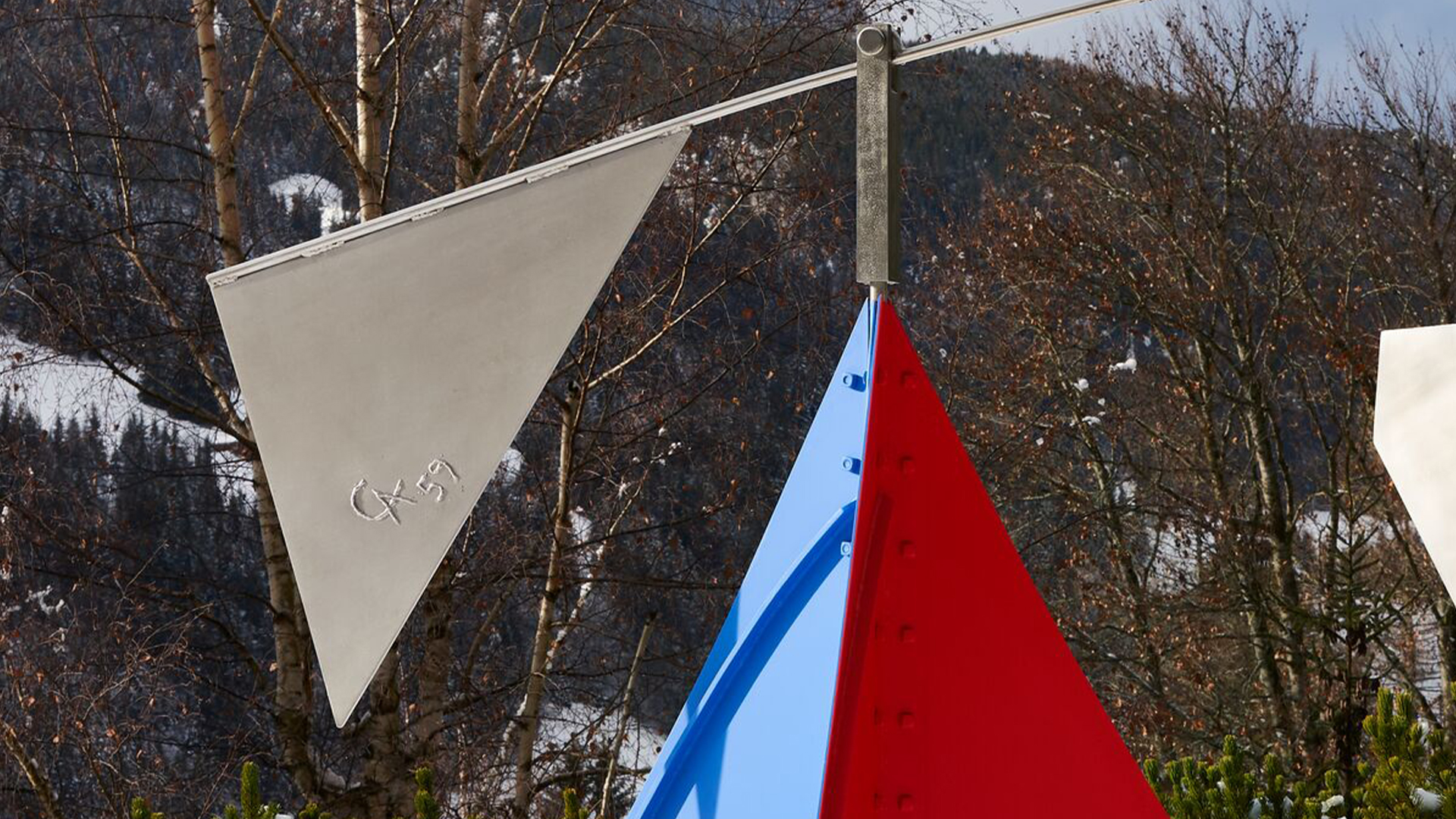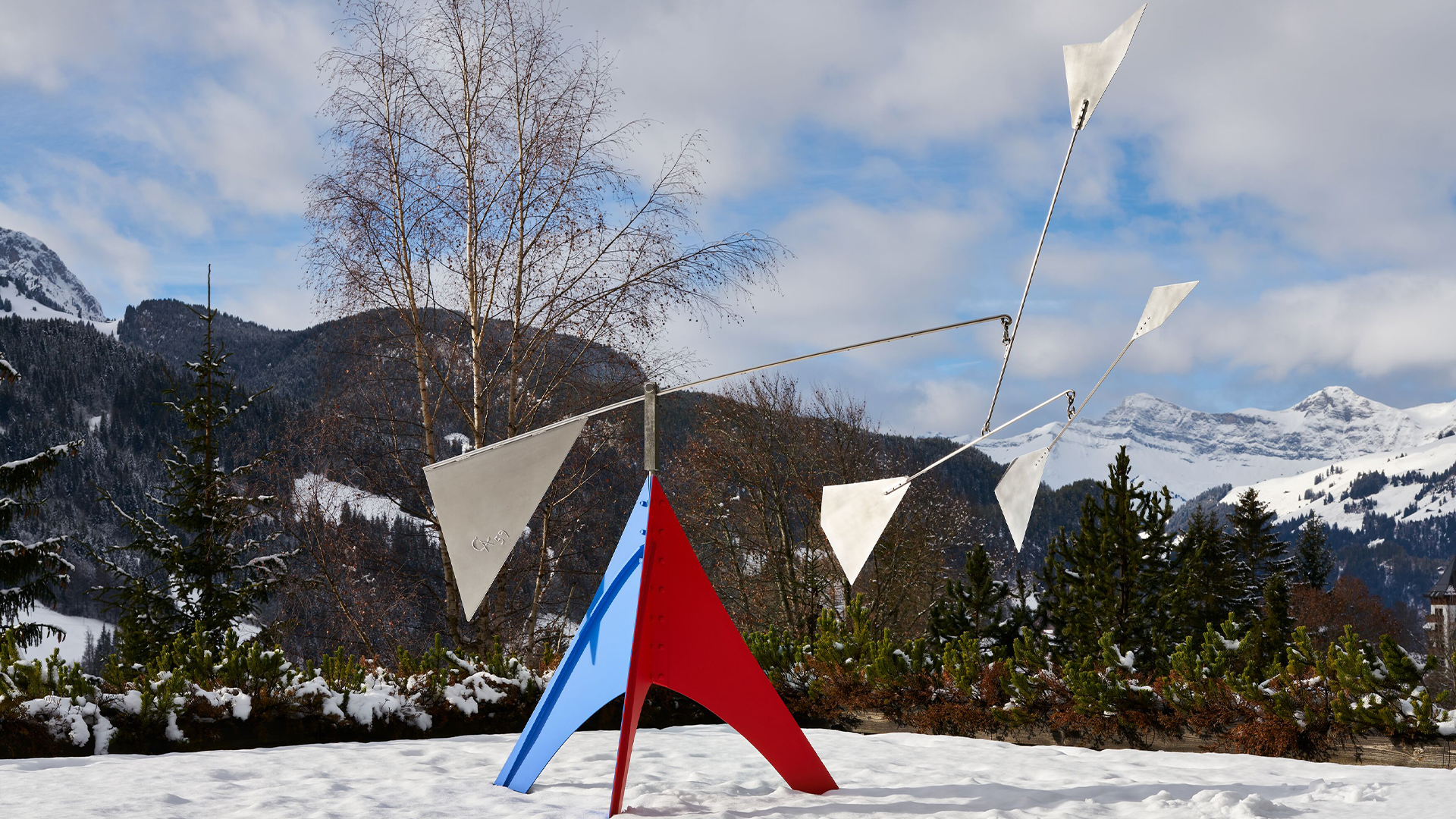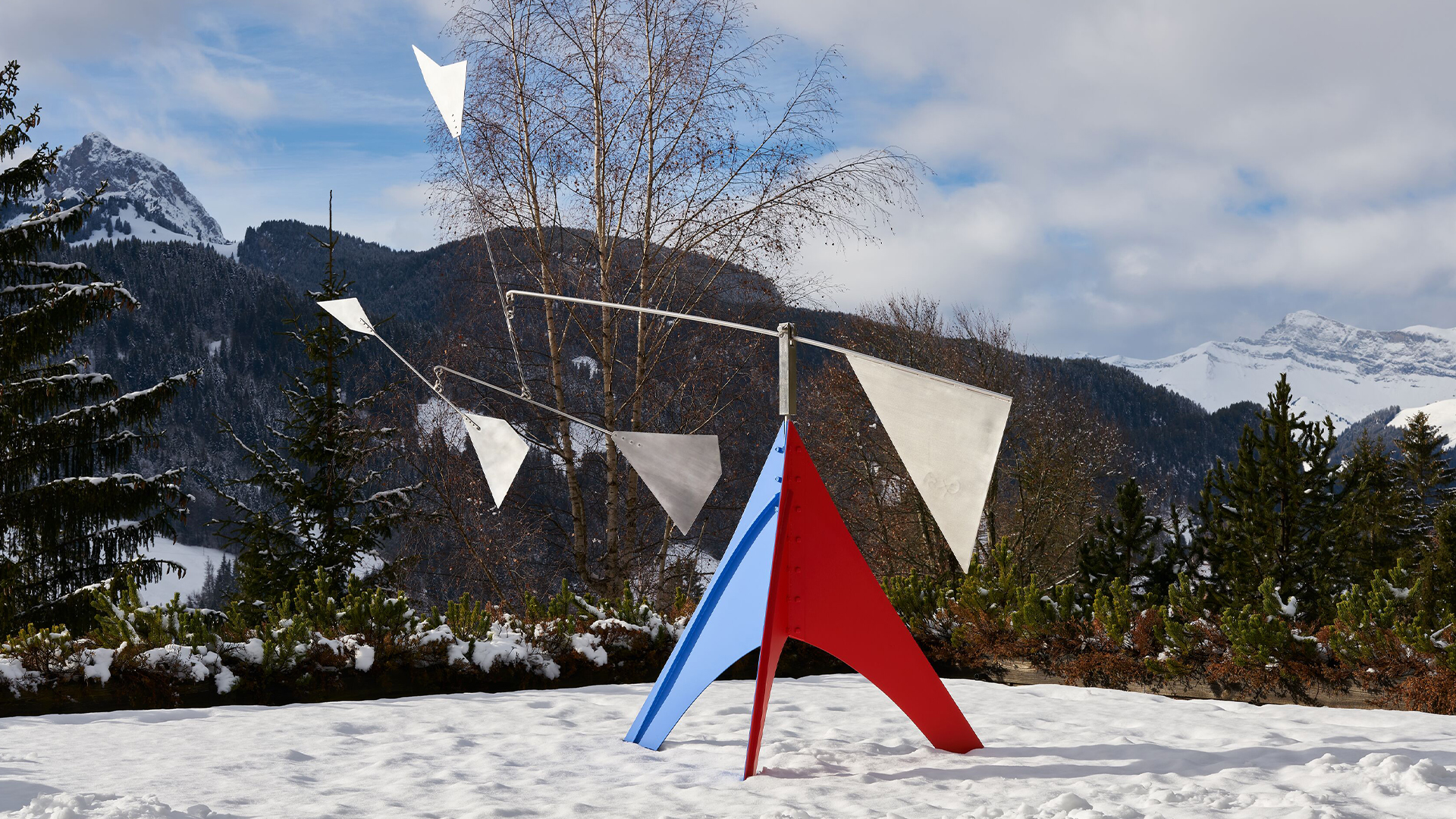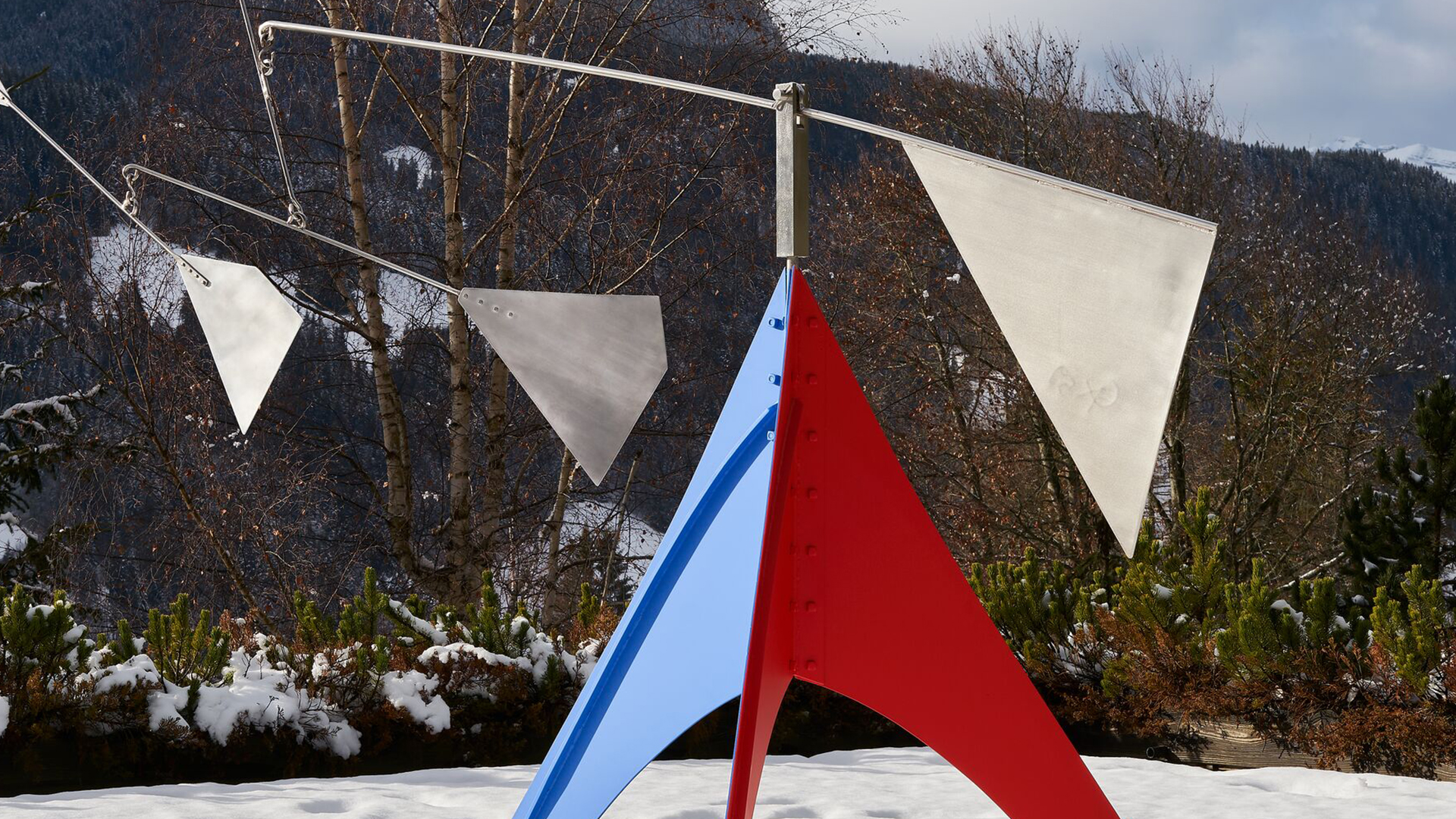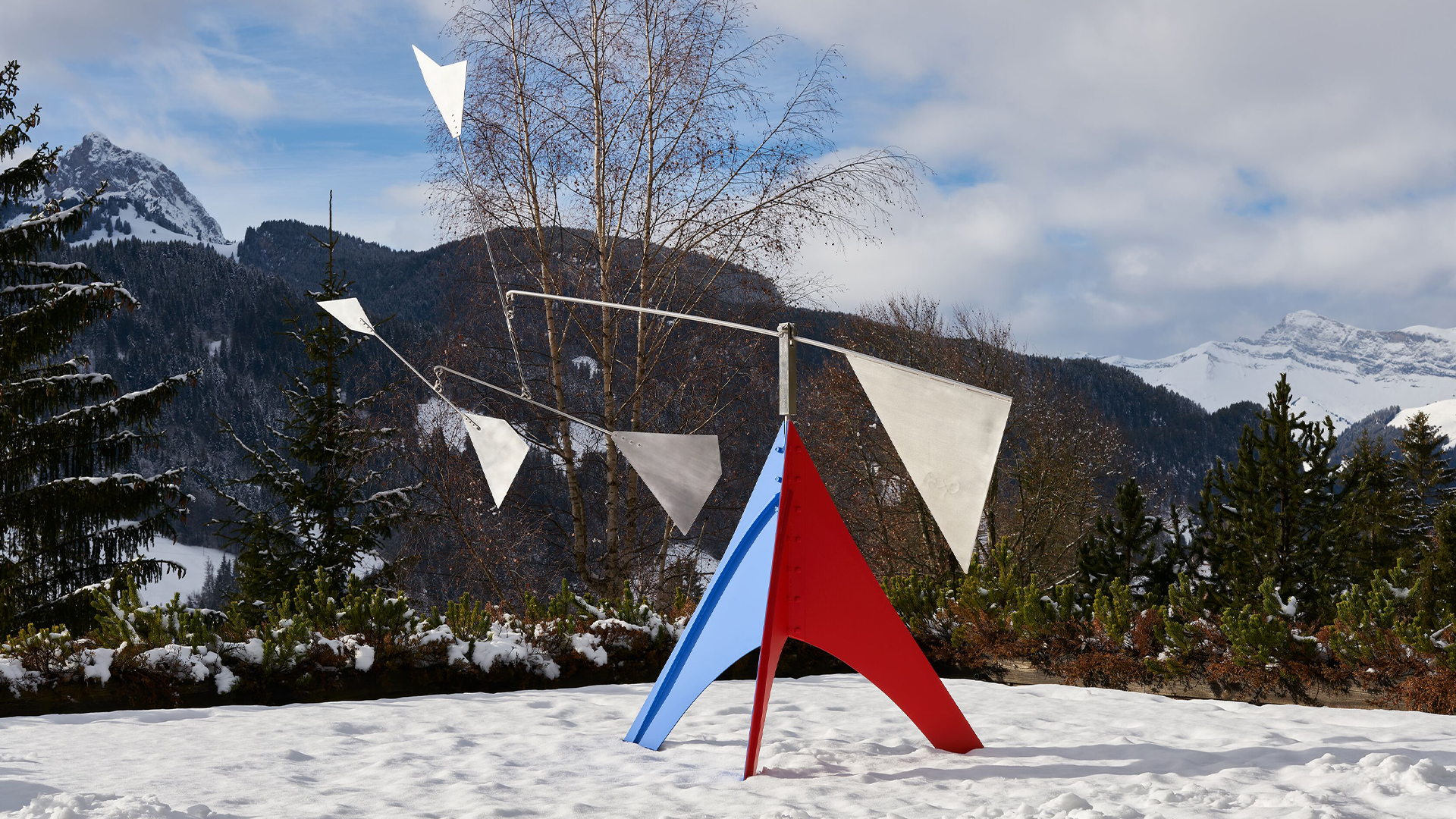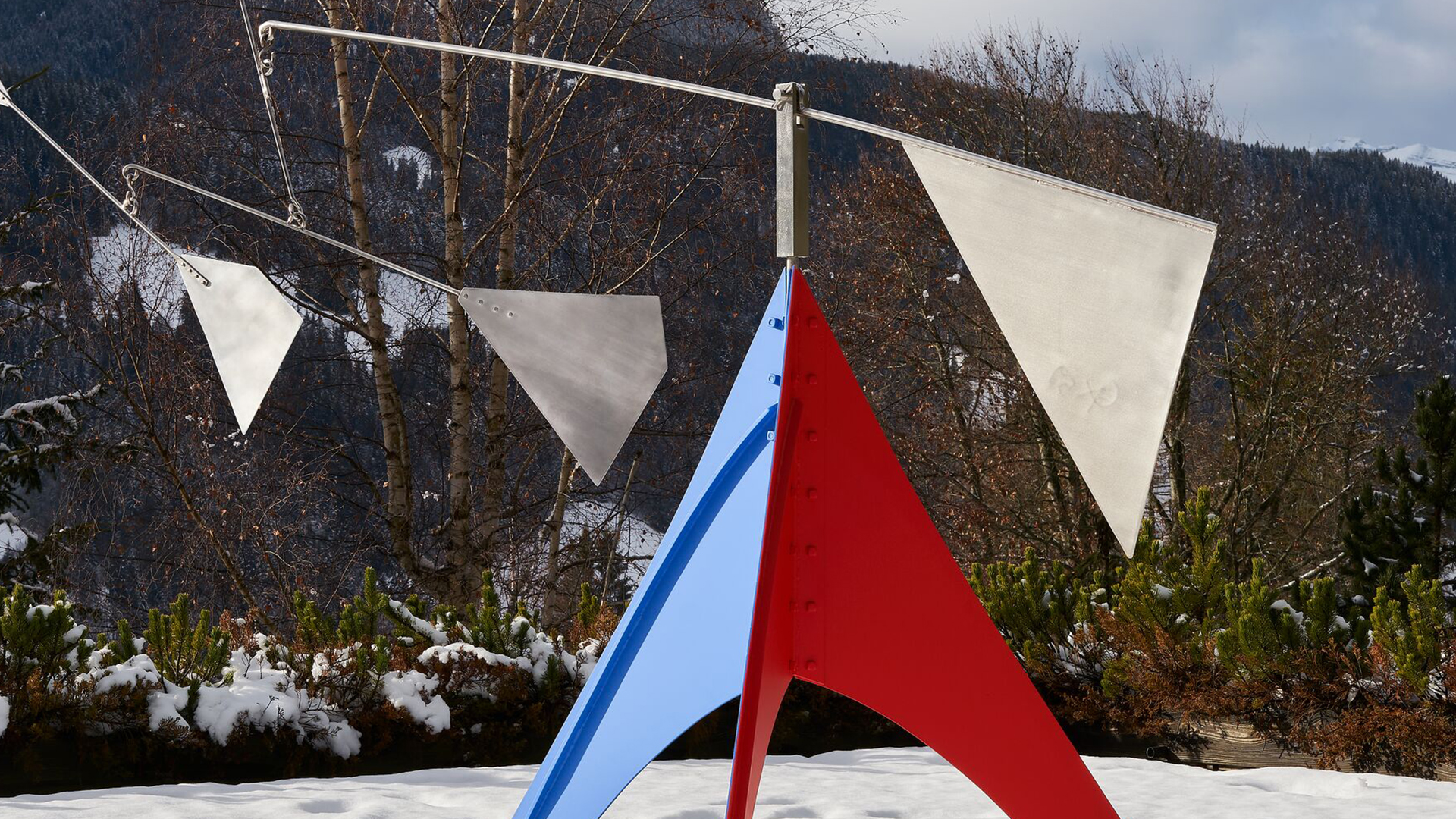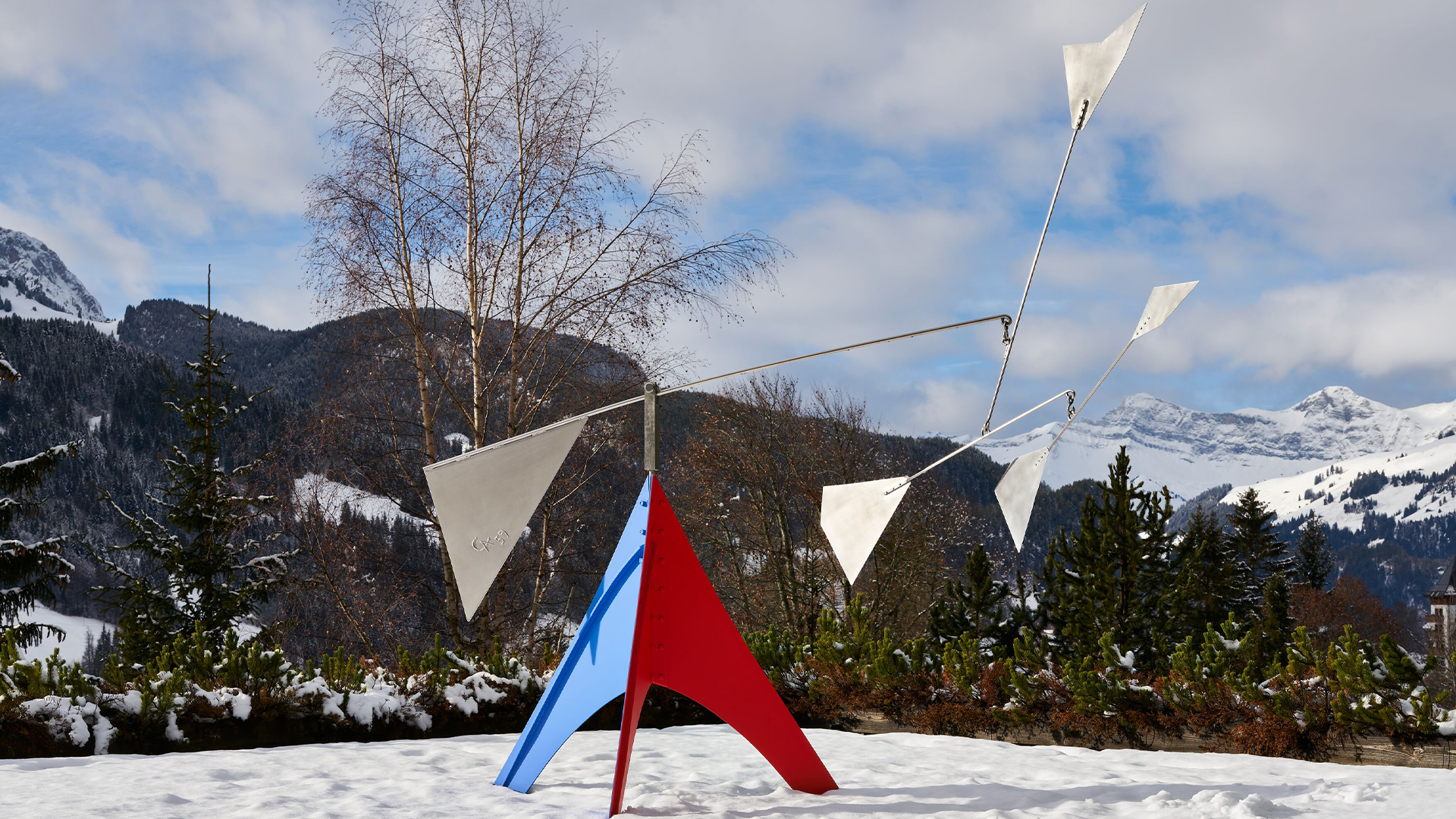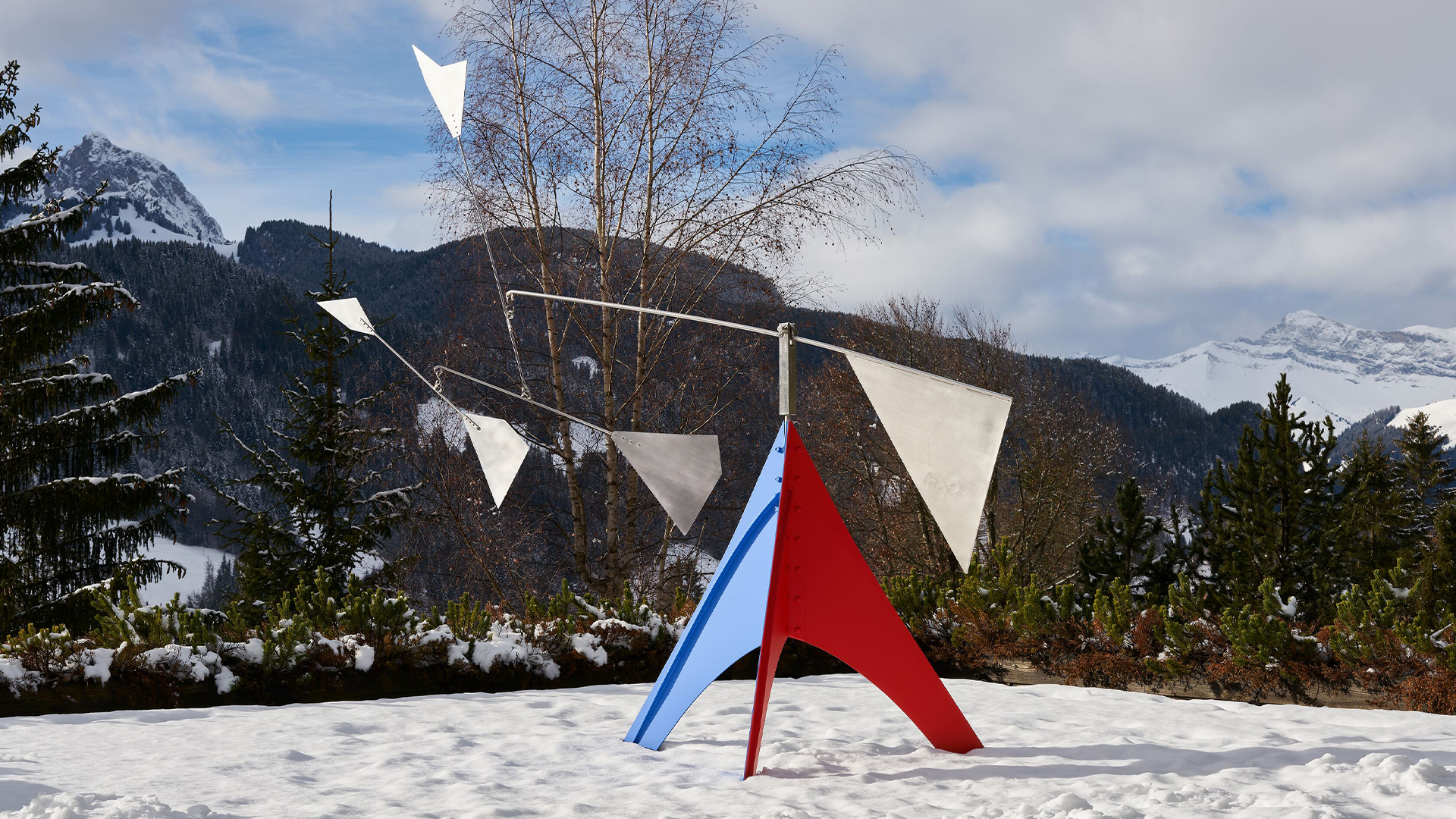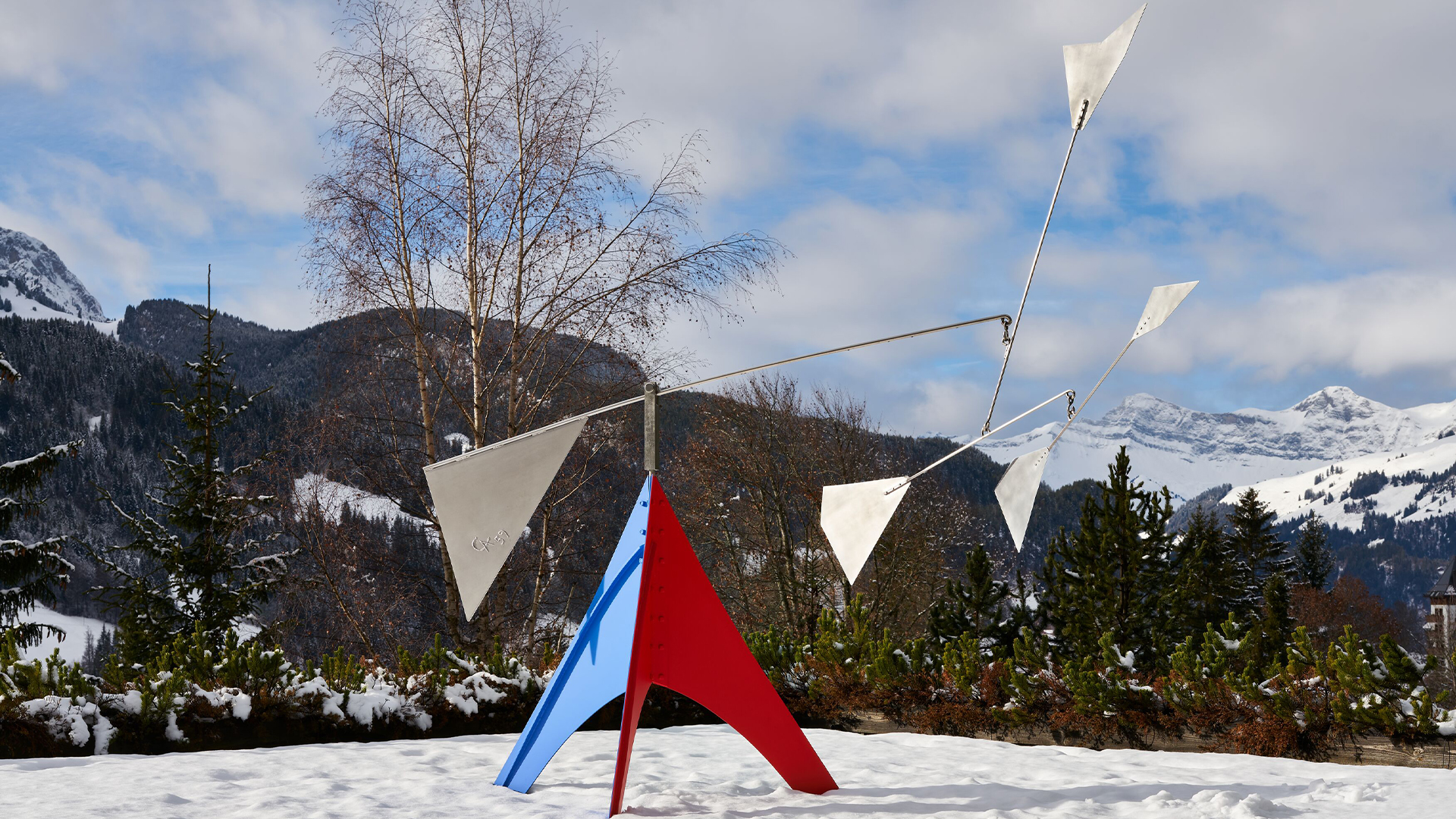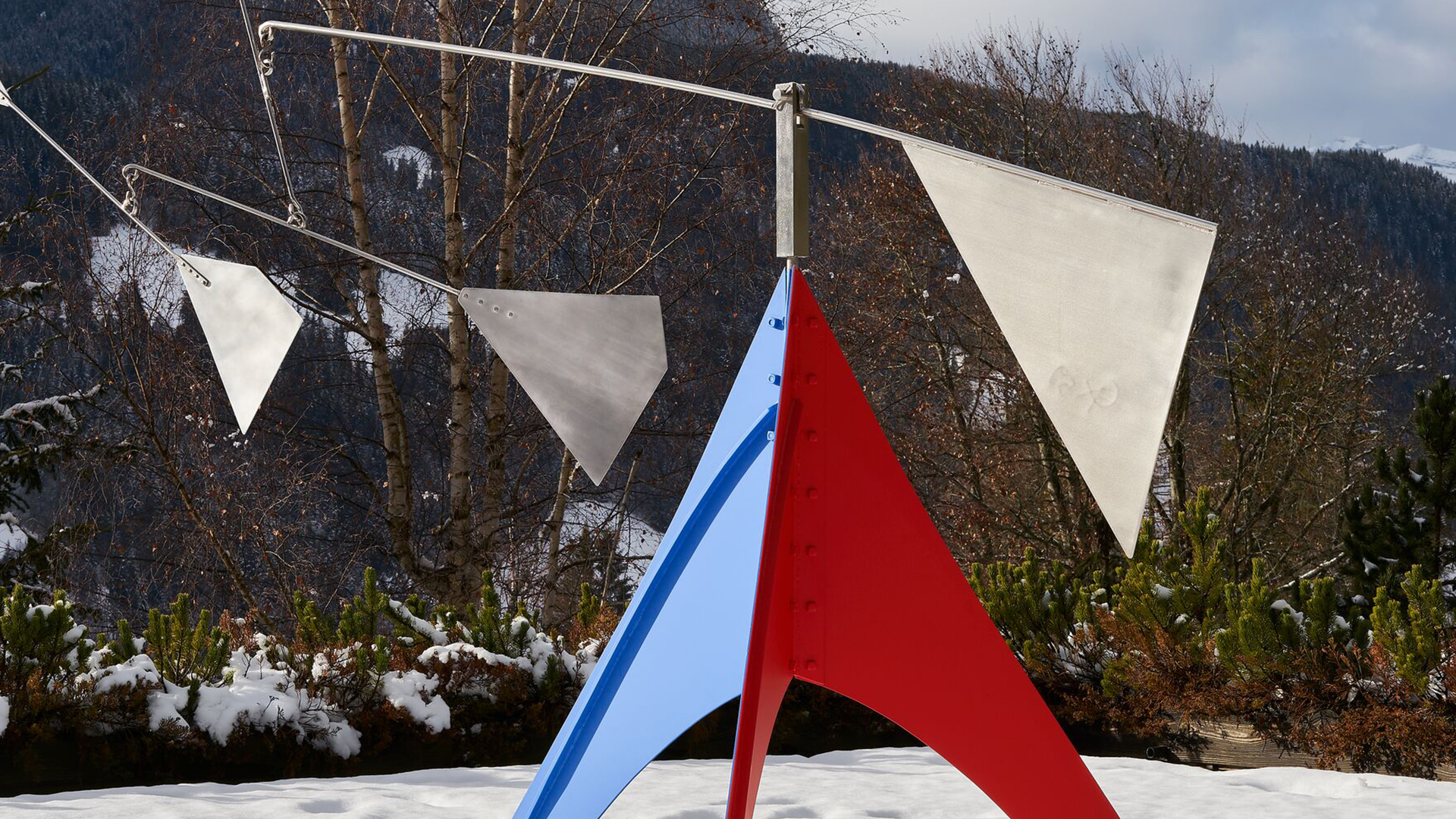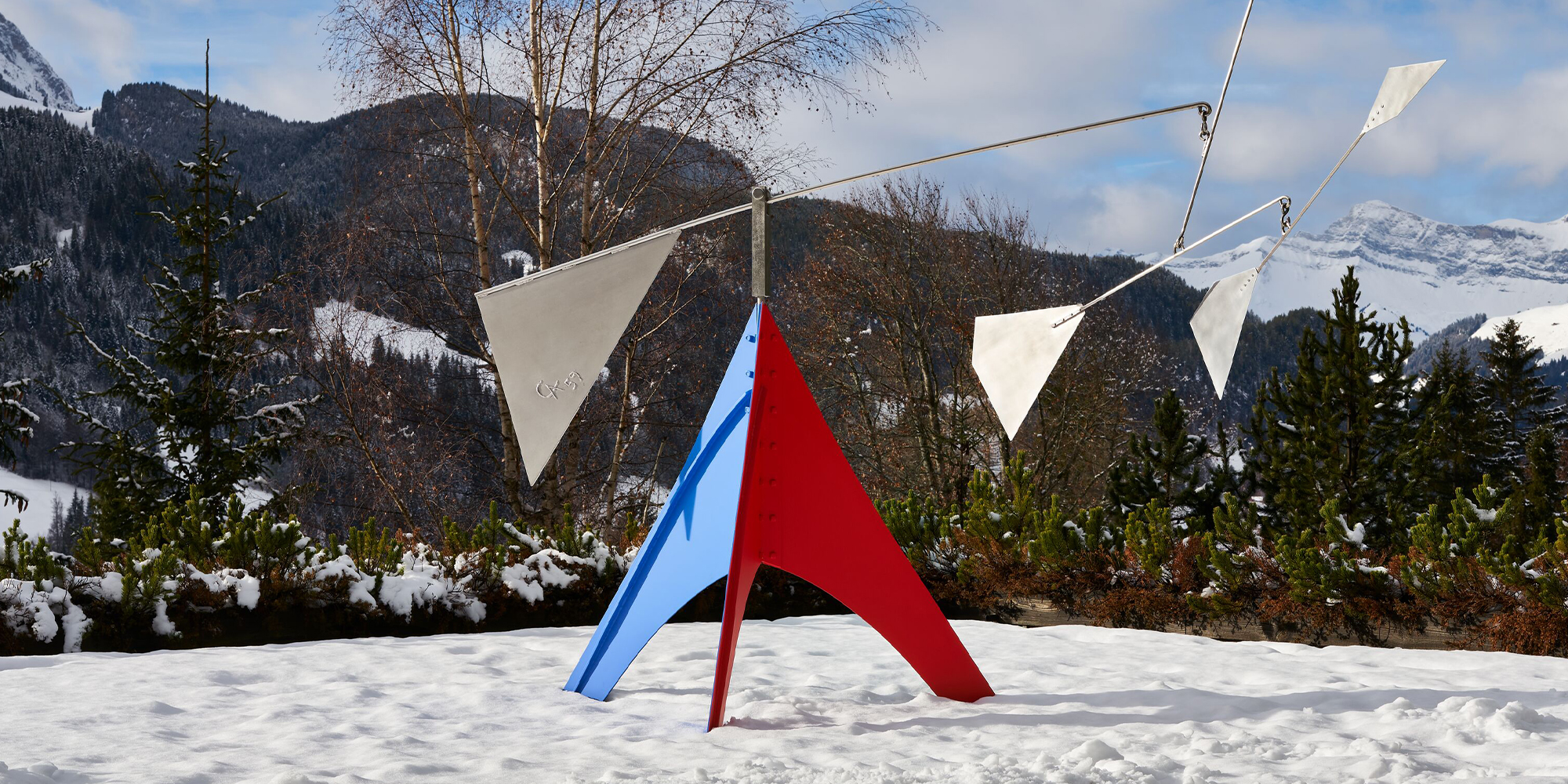
Alexander Calder
Slender Legs
Slender Legs
1959 Sheet metal, rod, and paint 354.4 x 391.1 x 190.5 cm / 139 ½ x 154 x 75 in Signed with the artist's monogram and dated: 'CA 59' (on the largest element)
A master of many materials and techniques, Alexander Calder created a diverse body of work that represents a career-long interest in voids and volumes. Calder’s experience as an artist with a direct and intuitive process gave him the unique skills to imagine and create new forms of art that radically alter our experience of space. His revolutionary techniques allowed him to suspend his ‘mobiles’ from ceilings and create ‘stabiles’ of immense complexity.
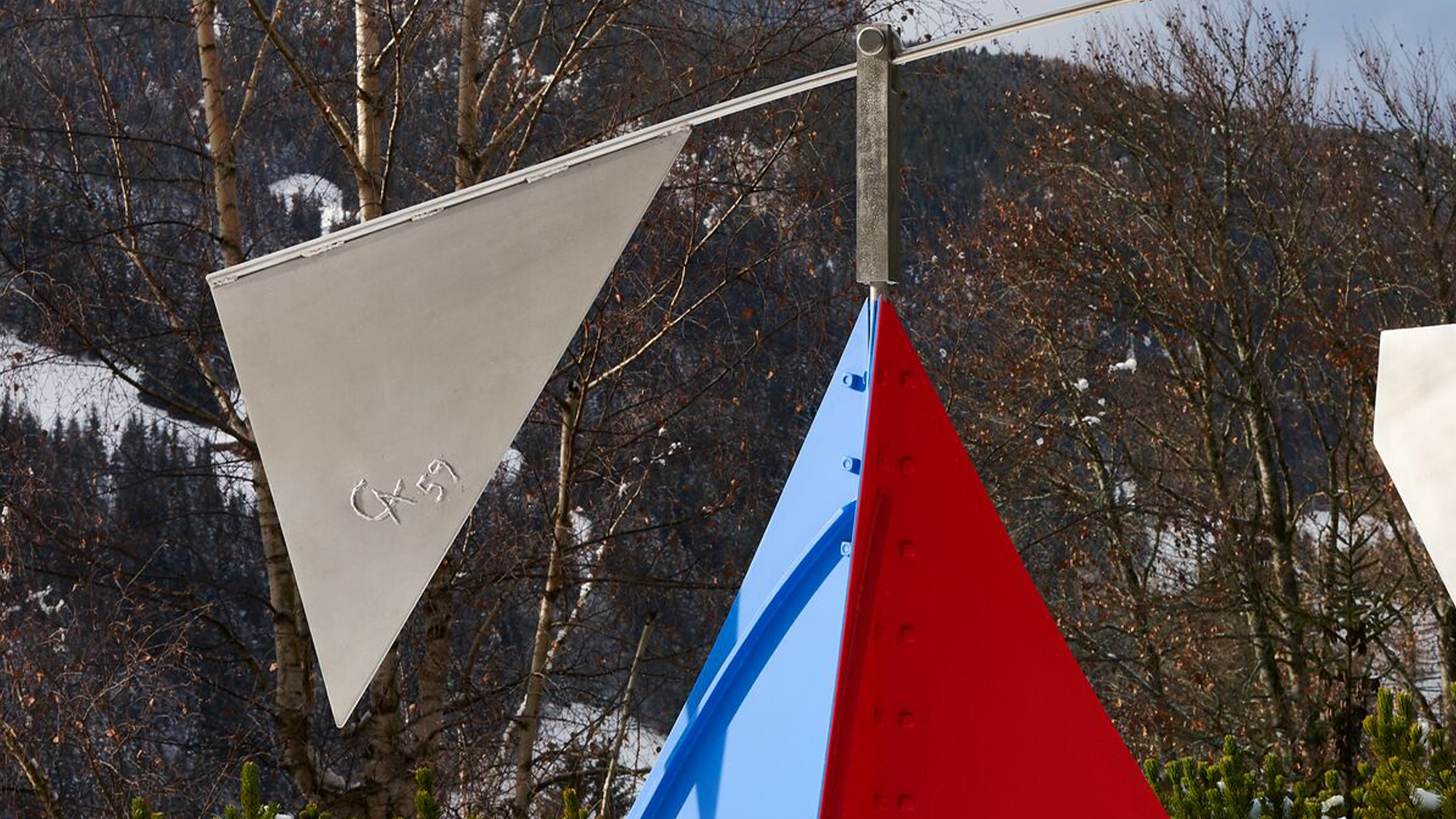
A hallmark piece executed on a grand scale, Calder’s ‘Slender Legs’ (1959) vacillates between motion and stasis and mobile and monument. The standing mobile—a marriage of the artist's two signature sculptural innovations—is composed of lithe, free-moving ‘arms’ counterbalanced by an immobile triangular base, or the work's titular ‘legs.’ Five sharply angular elements coming off the sculpture’s arms are unfixed, poised to shift and slip in a breeze.
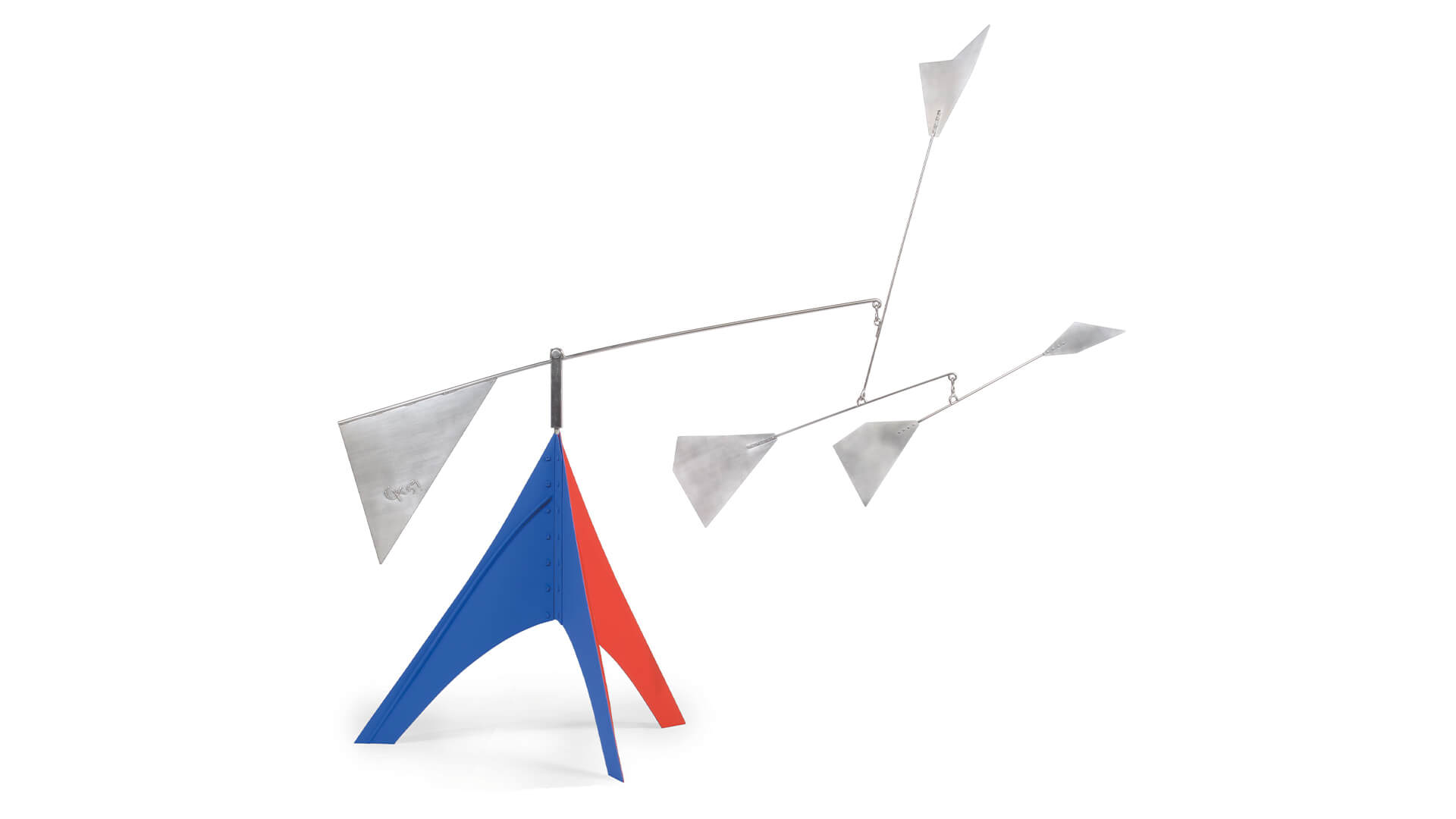
The moveable elements are made of sheet metal that has been left unpainted but polished to a silvery sheen, occasionally reflecting the sculpture's environs in slivers and fragments. Meanwhile, the simple triangular base—a sculpture in its own right—is a celebration of pure form with components painted in brilliant blue and red coming together at an elegant apex. While ‘Slender Legs’ may conjure up various associations, the work is completely abstract—exploring the fundaments of form and motion.

Calder produced ‘Slender Legs’ at a major transitional moment in his oeuvre. At the time he began to turn his attention from more intimate works to sculptures executed on a grand scale—a shift that he would describe one year later in 1960 as an ‘agrandissement’ in his work. [1] Foreshadowing his total commitment to monumental sculpture in the last decade of his life, Calder would spend 1957 to 1959 working on several important large-scale commissions. These projects included ‘The Whirling Ear’ for the United States Pavilion of the Brussels Universal and International Exhibition; ‘Spirale’ for the UNESCO headquarters in Paris; and ‘.125’ for Idlewild Airport (now known as John F. Kennedy International Airport) in New York.
Calder reviewing the installation of ‘.125,’ Idlewild Airport (now John F. Kennedy International Airport), New York, 1957 © 2023 Calder Foundation, New York / Artists Rights Society (ARS), New York
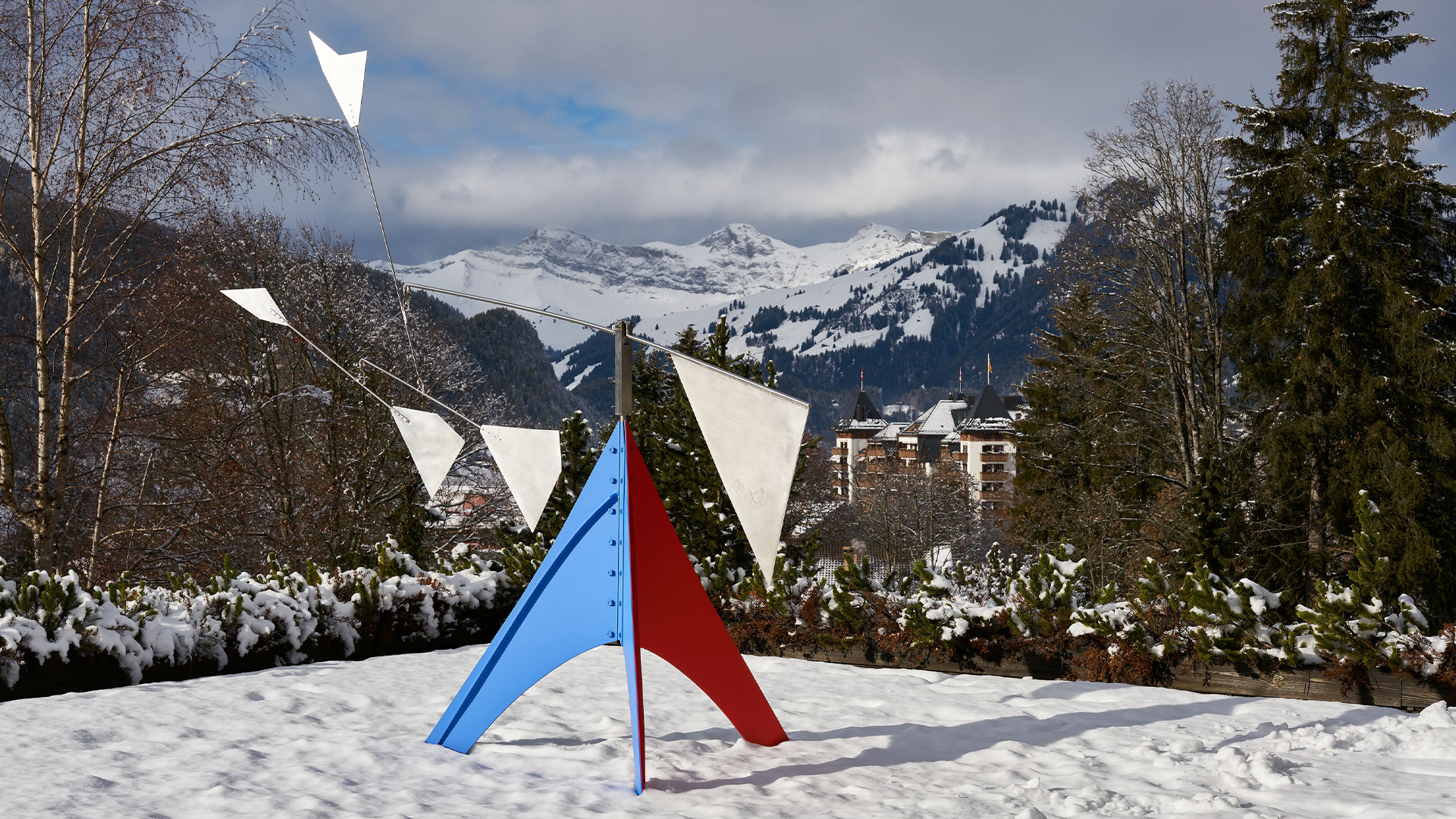
Like these contemporaneous public works, ‘Slender Legs’ invites a dynamic viewing experience. The viewer is pulled into the space of the sculpture, their sense of scale disoriented by its large size as its predilection toward motion poses a challenge to any notions of fixity. The work’s carefully balanced forms could be set into motion at any moment, introducing the magical element of chance that makes the artist's mobile sculptures so enchanting. In ‘Slender Legs’ Calder creates an object that is grand yet personal, rooted yet kinetic, and dynamic yet commanding: a testament to his unequalled mastery of his craft.
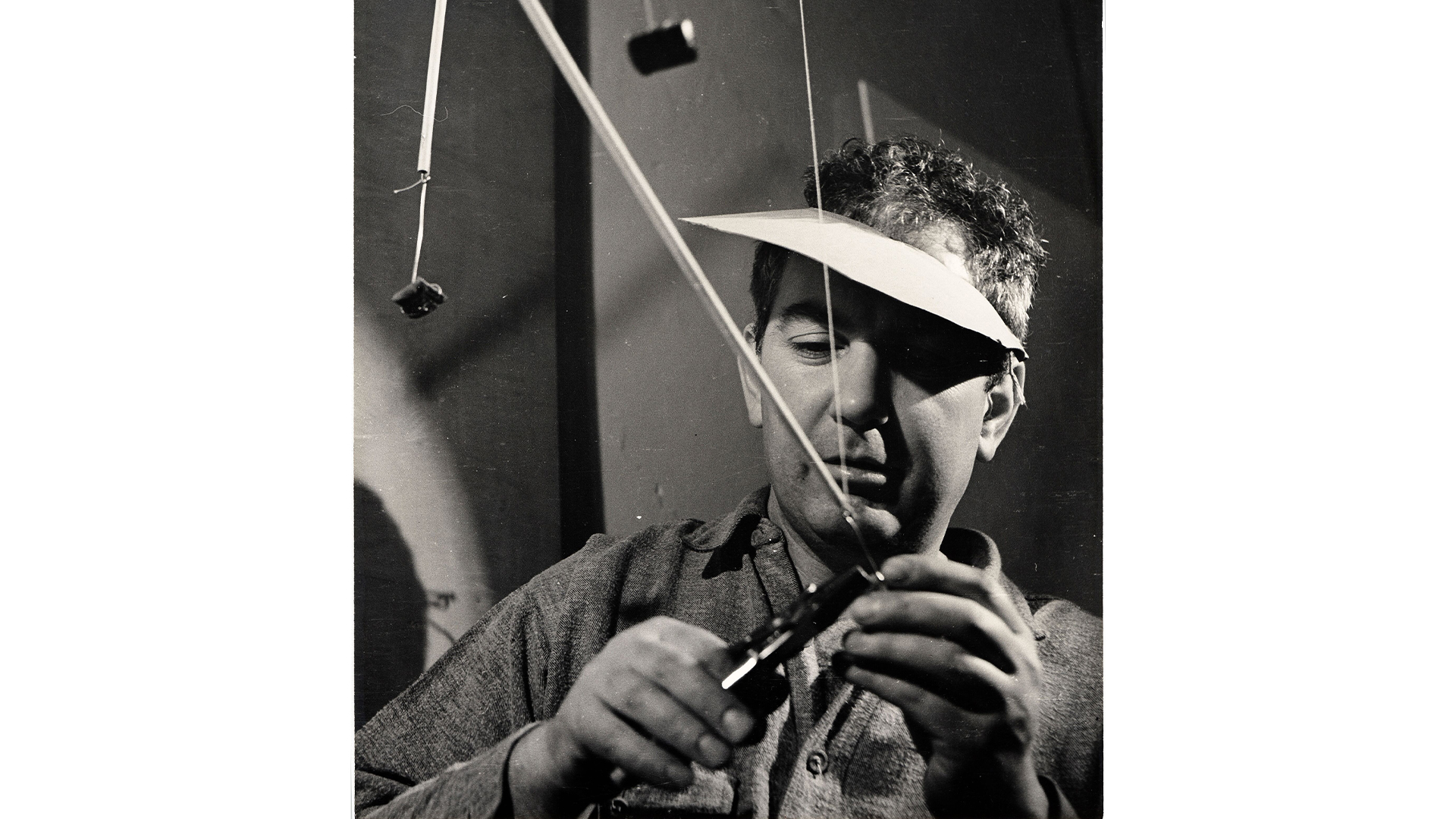
About the artist
Alexander Calder was born in 1898, the second child of artist parents—his father was a sculptor and his mother a painter. In his mid-twenties, Calder moved to New York City, where he studied at the Art Students League and worked at the ‘National Police Gazette,’ illustrating sporting events and the Ringling Bros. and Barnum & Bailey Circus. Shortly after his move to Paris in 1926, Calder created his ‘Cirque Calder’ (1926–31), a complex and unique body of art. It wasn’t long before his performances of the ‘Cirque’ captured the attention of the Parisian avant-garde.
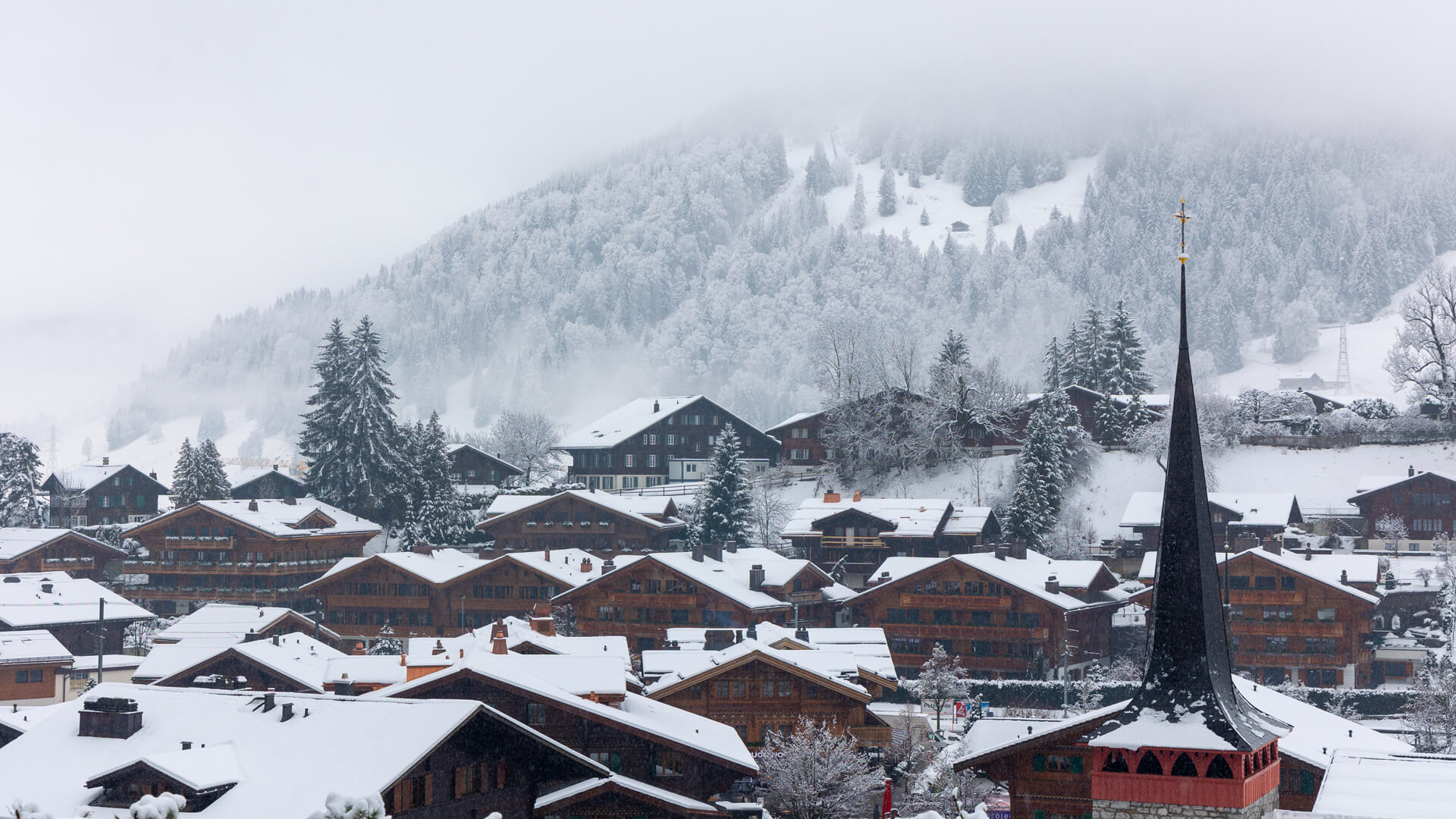
On View in Gstaad
‘Slender Legs’ is on view by appointment at Vieux Chalet, Gstaad. Please visit our location page or contact our team to learn more.
Images: Alexander Calder, Slender Legs, 1959 © 2023 Calder Foundation, New York / Artists Rights Society (ARS), New York. Photo: Jon Etter Video: Alexander Calder, Slender Legs, 1959 © 2023 Calder Foundation, New York / Artists Rights Society (ARS), New York Portrait: Alexander Calder with ‘Swizzle Sticks’ (1936) in his New York storefront studio, 1936 © 2023 Calder Foundation, New York / Artists Rights Society (ARS), New York. Photo: Herbert Matter
[1] Alexander Calder quoted in Geoffrey T. Hellman, ‘Onward and Upward with the Arts: Calder Revisited,’ New Yorker (22 October 1960), p. 169.
